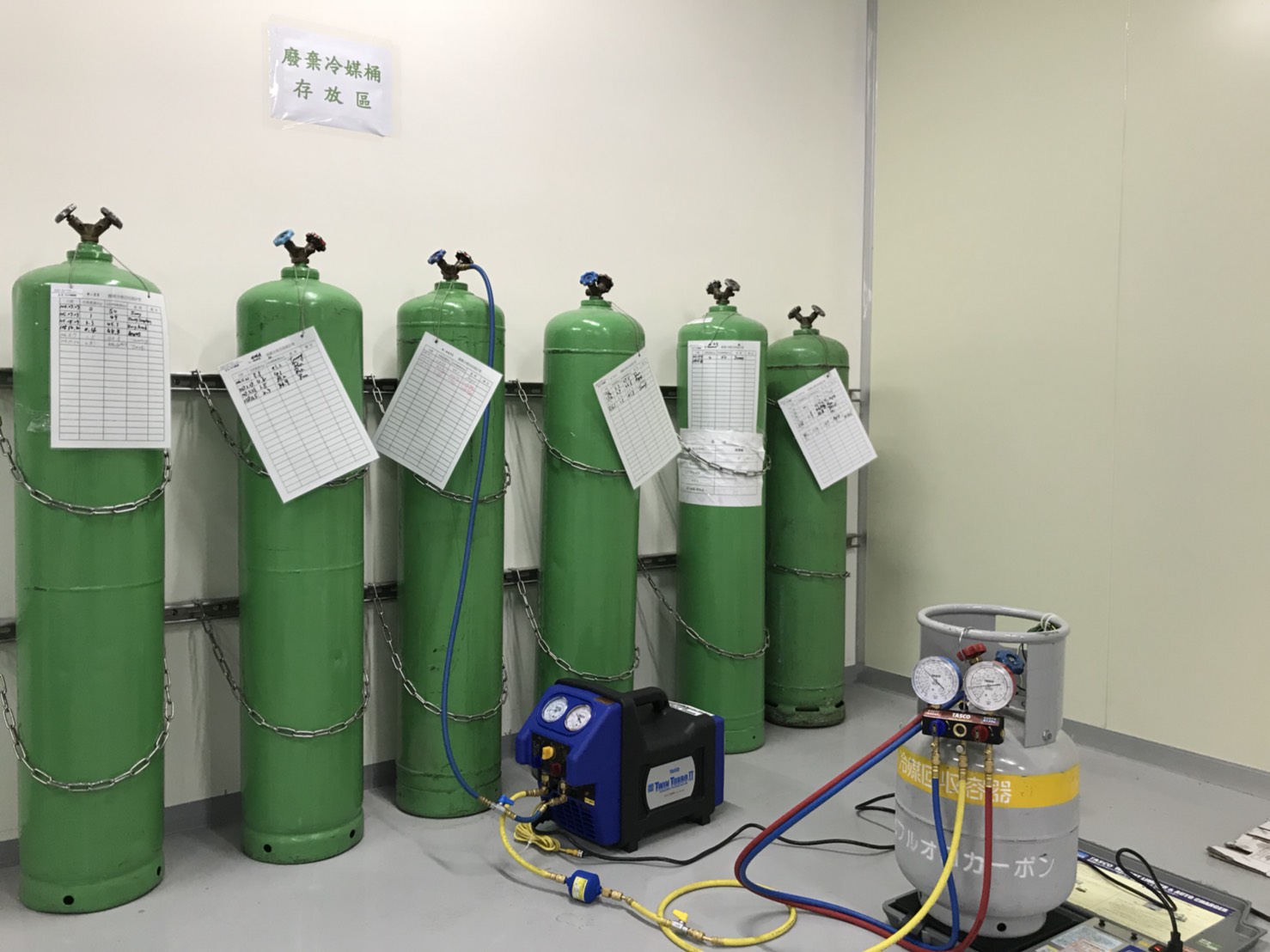When Hermes-Epitek repairs the machinery in our factories, waste refrigerant is generated. How should these refrigerants be treated? The pamphlet issued by the Environmental Protection Administration (EPA) states that, “When the manufacturer performs repair and maintenance work, if the refrigerant in the air conditioner has to be extracted, it should be pumped out using a refrigerant recovery machine. After maintenance has been completed, the refrigerant can be backfilled and used to replenish insufficient refrigerant quantities in order to reduce the emission of refrigerant gases into the atmosphere.”
We were confused upon first reading that refrigerant had to be recycled. Our initial impression was that, when air conditioners are replaced at home, the old refrigerant is simply discarded. This issue caught our attention: how should the refrigerant produced be handled? We asked around and sent a letter to the EPA Minister’s mailbox. The answer was: “There are no clear regulations on prohibiting or fining the direct discharge of refrigerants.”
In other words, refrigerant recycling is optional. But if refrigerant is decomposed by ultraviolet rays, the released chlorine atoms will react with the ozone, damage the ozone layer and produce a greenhouse effect. While the alternative refrigerants can slow down ozone layer problems, it cannot effectively reduce the harm of the greenhouse effect. If on the other hand refrigerants are recycled, the total amount used will be reduced. It is a way to mitigate the greenhouse effect.
Refrigerants emit a lot more greenhouse gases than carbon dioxide and are one of the most important factors contributing to global warming. We estimate that 100 kilograms of waste refrigerant can be recycled in one year, meaning that greenhouse gas emissions can be reduced by 180,000 kilograms per year, which is equivalent to the amount of carbon dioxide absorbed by 16,000 trees per year. To use an example closer to daily life, this is equivalent to saving nearly 300,000 kWh of electricity per year.
After discussions with the EPA, we found a reputable company that has the capacity to collect refrigerant and re-process it into solvents, refrigerants or other products and has cooperated with many well-known companies in different countries and has obtained the Montreal Protocol’s license to sell chemical substances.
Since we share the same ideals, we entered into a partnership. Hermes-Epitek has now purchased steel cylinders especially for refrigerant recovery in the factory areas, and we have also established safety measures and standard operating procedures to officially initiate refrigerant recovery operations. Although this has slightly increased the workload for our engineers and is also not required by law, we hope that our efforts in protection of the environment can influence people around us and inspire them to support and imitate our actions. Together, we can do our share in caring for the earth.
Author / Jenson

